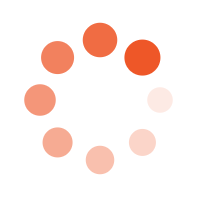Leveraging Design for X Methodologies to Mitigate Limited Innovation in Medical Devices
Limited innovation doesn’t have to constrain the lifecycle of medical devices. DFX methodologies provide a unique lens to innovate within existing frameworks, ensuring products remain competitive and relevant.
Extending the lifespan of medical devices can be a pragmatic approach to cost management and resource optimization. However, limited innovation often poses a significant challenge in this process. Collaborating with a Design for X (DFX) expert can provide targeted strategies to overcome this obstacle.
Here’s how each DFX methodology can help mitigate the potential drawbacks of limited innovation:

The focus and discipline of DFX is a powerful tool if used as part of a broader strategic approach to developing product/process differentiation, and a sustainable advantage against competition. Involve Design for X in Strategy. Once your team has determined the focus of your strategy, place the focus of design on developing competitive advantage.
At Boston Engineering, DFX is a core part of creating values during our product development process. We focus on several key DFX areas that align with our expertise:
- Design for Manufacturability (DFM)
- Design for Assembly (DFA)
- Design for Cost (DFC)
- Design for Testability (DFT)
- Design for Reliability (DFR)
- Design for Serviceability/Maintainability (DFS)
- Design for Usability (DFU)
- Design for Modularity (DFMo)
Learn more about Design for X (DFX) at Boston engineering: Boston Engineering Design for X

(continued from above)
Design for Manufacturability (DFM)
Objective: Streamline manufacturing processes to reduce costs and improve scalability.
Application:
- A DFM-focused redesign can incorporate modern manufacturing techniques like additive manufacturing or automated assembly lines.
- These advancements can enable the integration of new materials or design features without substantial cost increases.
- By simplifying manufacturing constraints, DFM allows for greater experimentation with innovative features.
- Example: Updating an existing Holter monitor with 3D-printed enclosures that enable enhanced durability or new ergonomic designs.
Design for Assembly (DFA)
Objective: Simplify assembly processes to reduce time and errors.
Application:
- Reducing the number of components in a device can make room for new functionalities or features without increasing assembly complexity.
- Modular designs can allow for easier upgrades or feature additions.
Impact on Innovation:
- Faster and more efficient assembly processes free up resources to focus on creative feature enhancements.
- Example: A streamlined assembly process for infusion pumps that includes pre-configured smart sensors for advanced monitoring.
Design for Cost (DFC)
Objective: Minimize production costs without compromising quality.
Application:
- Cost reductions in non-critical areas can be redirected toward innovative elements, such as improved software or user interfaces.
- Leverage economies of scale by designing components that can be used across multiple product lines.
- Cost savings provide additional budget for R&D and integration of novel technologies.
- Example: Using cost-effective materials for external casings while investing in advanced AI capabilities for data analysis.
Interested in providing your product development team with DFX skills? Learn More about our Applied DFX process and development workshops.


(continued from above)
Design for Testability (DFT)
Objective: Enhance the ease and accuracy of testing during the production and maintenance stages.
Application:
- Introduce built-in self-test (BIST) features to ensure device reliability and identify improvement areas.
- Enable rapid prototyping and testing of innovative features to ensure feasibility and compliance with regulatory standards.
Impact on Innovation:
- Early detection of design flaws accelerates the innovation cycle.
- Example: Adding diagnostic testing modules to surgical instruments to validate performance under varied conditions.
Design for Reliability (DFR)
Objective: Maximize the reliability and lifespan of a device under real-world conditions.
Application:
- Focus on predictive maintenance and robust designs that adapt to diverse operational environments.
- Use advanced simulation tools to test new features under stress conditions.
Impact on Innovation:
- Reliable designs increase user trust, encouraging the adoption of incremental yet impactful innovations.
- Example: Ensuring that updates to a blood glucose meter’s sensors maintain long-term accuracy despite frequent use.
Design for Serviceability/Maintainability (DFS)
Objective: Simplify maintenance and reduce downtime.
Application:
- Modular components can be easily replaced or upgraded, allowing for incremental innovation.
- Design service tools and processes that facilitate faster troubleshooting and updates.
Impact on Innovation:
- Easier maintenance encourages more frequent updates, keeping the device competitive.
- Example: Infusion pumps designed with swappable modules for software updates or hardware enhancements.
Design for Usability (DFU)
Objective: Improve the user experience to enhance adoption and satisfaction.
Application:
- Conduct user-centric design research to identify and address pain points in current devices.
- Incorporate intuitive interfaces and ergonomic improvements based on user feedback.
Impact on Innovation:
- Enhanced usability drives user satisfaction, creating opportunities for feature expansions.
- Example: A Holter monitor redesigned with a touch-sensitive screen and simplified navigation for older patients.
Objective: Enable customization and future upgrades through modular design.
Application:
- Break down complex devices into interchangeable modules that can be upgraded independently.
- Design universal connectors and interfaces for seamless integration of new components.
Impact on Innovation:
- Modular designs allow for continuous, non-disruptive innovation.
- Example: An X-ray machine updated with modular digital detectors that replace analog components incrementally.
New eBook Available Now!
"Leveling Up Existing Products through DFX"
-Download Insights from a DFX Subject Matter Expert-
 Developing successful new products from scratch is challenging enough, but what about improving on existing designs?
Developing successful new products from scratch is challenging enough, but what about improving on existing designs?
In this eBook, we’ll dive into the real-world experiences of DFX subject matter expert John DePiano, exploring the common areas where existing product owners excel, as well as the key opportunities where targeted DFX support can drive major improvements.

Understanding the Importance of a DFX approach
Applying Design for X (DFX) methodologies upfront in product development optimizes the entire lifecycle by improving manufacturability, testability, reliability, usability, and other critical characteristics. This avoids costly redesigns later on, facilitates high-quality products that satisfy customers, reduces manufacturing and service costs, and supports flexibility through modularity and platforms. The holistic perspective of DFX drives efficient, cost-effective delivery of successful products that provide competitive advantage. Investing in DFX early pays dividends across the entire product lifespan.
Do you offer training on DFX for engineering teams?
Education is critical to effectively implement DFX principles. We provide training tailored to your engineers’ roles and product lines. This includes overall DFX methodology, deep dives into specific disciplines like design for reliability or manufacturability, and practical application workshops. Our hands-on approach combines real-world examples and case studies with tutorials on leading DFX software tools. The goal is building organizational DFX expertise and establishing repeatable processes that endure beyond individual projects. Investing in DFX knowledge pays dividends across your entire product portfolio.

Ready to Begin your next DFX Project?
 Whether you’ve created a new technology, or have an innovative way to use an existing solution, Boston Engineering will turn your ideas into reality. Our experts and Industry Partners will enhance your current team or manage the entire Product Development Process from Market Analysis to Production. Don't leave complex projects or high visibility product launches to chance. Know you're going to get the results you want by working with industry leaders in design, development, and deployment of innovative products driven by Novel Engineering. Contact Boston Engineering Today to get started.
Whether you’ve created a new technology, or have an innovative way to use an existing solution, Boston Engineering will turn your ideas into reality. Our experts and Industry Partners will enhance your current team or manage the entire Product Development Process from Market Analysis to Production. Don't leave complex projects or high visibility product launches to chance. Know you're going to get the results you want by working with industry leaders in design, development, and deployment of innovative products driven by Novel Engineering. Contact Boston Engineering Today to get started.
No matter the challenge, our team possesses the expertise in the engineering disciplines and technologies you need to bring your vision to life. Impossible Challenge? Try Us.
-1.png?width=2000&height=279&name=MED%20Coffee%20Talk%20Mastering%20Use%20Cases%20%26%20Cybersecurity%20(2)-1.png)
Impossible Challenge? Try Us.
Selecting a partner to help you complete your design project is a valuable option to reduce project duration and save money.
The Boston Engineering product development system encompasses DFX to ensure a smooth product launch and success in the marketplace. Boston Engineering has DFX knowledge and experience to address aspects and values of a product such as manufacturability, test, reliability, safety, serviceability, cost, and compliance with industry standards and government regulations.

Imagine your Impact: Stay up-to date- with the latest insights and trends we're watching. Add your email address below and sign up for a Monthly Summary of our most impactful posts!











